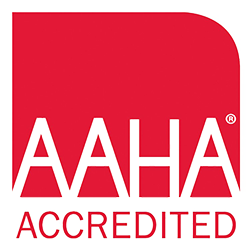Library
-
Certain medical conditions require drugs that are available only in an injectable format. In many cases, cat owners can administer these medications at home. Most cats do not mind routine injections that are given in the subcutaneous tissue. This handout provides step-by-step instructions for giving an injection. Dispose of used needles and syringes properly.
-
Certain medical conditions require drugs that are available only in an injectable format. In many cases, dog owners can administer these medications at home. Most dogs do not mind routine injections that are given in the subcutaneous tissue. This handout provides step-by-step instructions for giving an injection. Dispose of used needles and syringes properly.
-
This article outlines how to administer liquid medication directly into your cat's mouth using a syringe. Make sure you give your cat plenty of praise throughout the procedure and offer a special treat after giving the medication.
-
This article outlines how to administer liquid medication directly into your dog’s mouth using a syringe. Make sure you give your dog plenty of praise throughout the procedure and offer a special treat after giving the medication.
-
Medicating or giving oral liquids to small mammals requires some basic guidance. Syringe-feeding rabbits, guinea pigs, and other small rodents may require you to wrap your pet in a "burrito". Knowing the proper location in the mouth to introduce the syringe will be essential to success. Having the right size syringes and the right amount of liquid for your pet is very important.
-
Giving pills to cats can be a challenge, even for the most experienced veterinarian! The easiest way to give your cat a pill is to hide the pill in food. Some cats will always find the pill and spit it out, so you may need to administer it directly into your cat's mouth. This handout provides a step-by-step guide to do this, along with some other options if it is still too difficult.
-
Giving pills to dogs can be a challenge, even for the most experienced veterinarian! The easiest way to give your dog a pill is to hide the pill in food. Some dogs will always find the pill and spit it out, so you may need to administer it directly into your dog's mouth. This handout provides a step-by-step guide to doing this at home.
-
This handout describes the benefits of performing examinations at home between regularly scheduled veterinary visits. It outlines the different parts of the body to examine, how to examine and what to look for as abnormals.
-
Glaucoma is a disease of the eye in which the pressure within the eye, called intraocular pressure (IOP), is increased. Glaucoma is caused by inadequate drainage of aqueous fluid. Glaucoma is classified as primary or secondary. High intraocular pressure causes damage to occur in the retina and the optic nerve. Blindness can occur very quickly unless the increased IOP is reduced. Analgesics to control the pain and medications that decrease fluid production and promote drainage are often prescribed to treat glaucoma. The prognosis depends to a degree upon the underlying cause of the glaucoma.
-
Glaucoma is a disease of the eye in which the pressure within the eye, called the intraocular pressure (IOP) is increased. Glaucoma is caused by inadequate drainage of aqueous fluid. It is classified as primary or secondary glaucoma. High intraocular pressure causes damage to occur in the retina and the optic nerve. Blindness can occur very quickly unless the increased IOP is reduced. Analgesics to control the pain and medications that decrease fluid production and promote drainage are often prescribed to treat glaucoma. The prognosis depends to a degree upon the underlying cause of the glaucoma.


